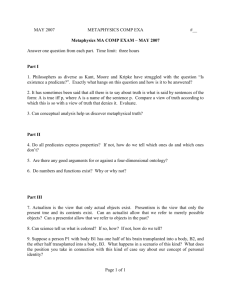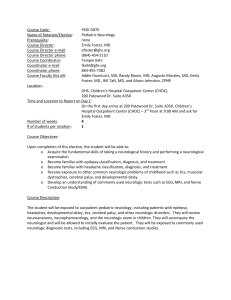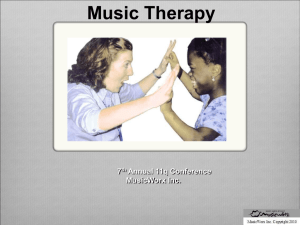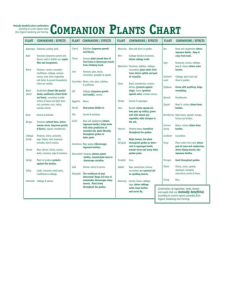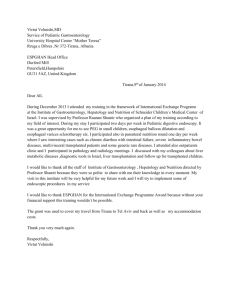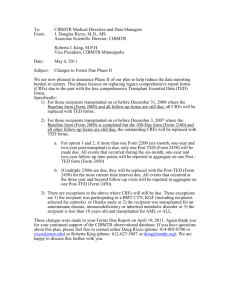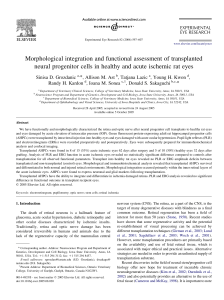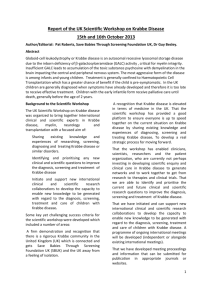ABSTRACT 3
advertisement
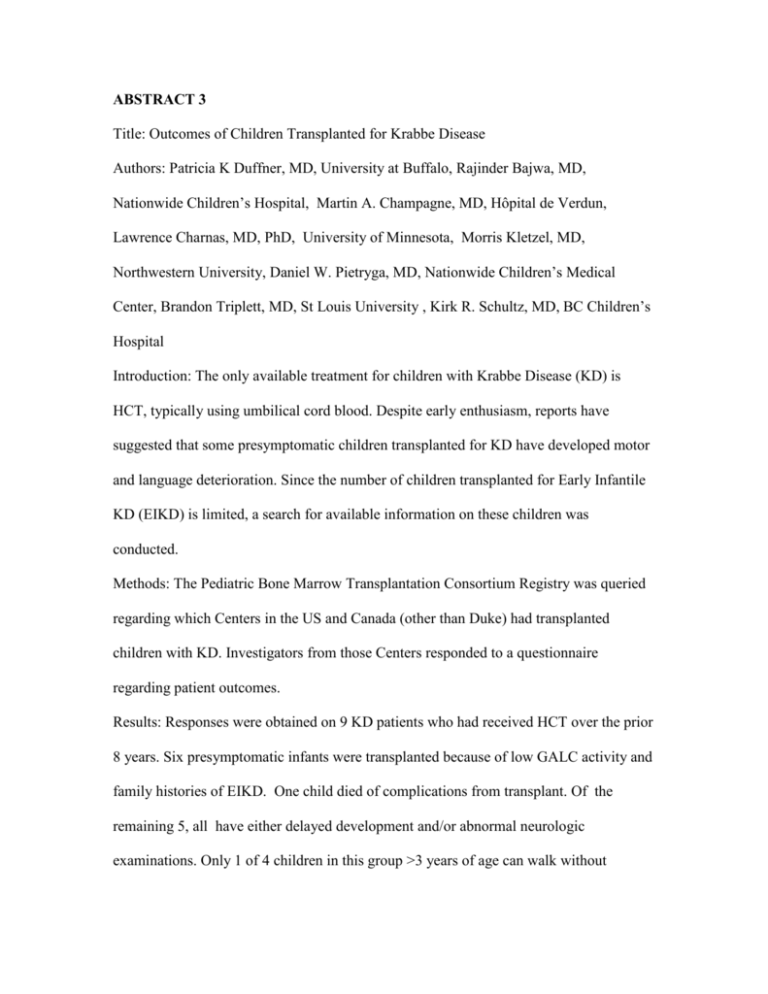
ABSTRACT 3 Title: Outcomes of Children Transplanted for Krabbe Disease Authors: Patricia K Duffner, MD, University at Buffalo, Rajinder Bajwa, MD, Nationwide Children’s Hospital, Martin A. Champagne, MD, Hôpital de Verdun, Lawrence Charnas, MD, PhD, University of Minnesota, Morris Kletzel, MD, Northwestern University, Daniel W. Pietryga, MD, Nationwide Children’s Medical Center, Brandon Triplett, MD, St Louis University , Kirk R. Schultz, MD, BC Children’s Hospital Introduction: The only available treatment for children with Krabbe Disease (KD) is HCT, typically using umbilical cord blood. Despite early enthusiasm, reports have suggested that some presymptomatic children transplanted for KD have developed motor and language deterioration. Since the number of children transplanted for Early Infantile KD (EIKD) is limited, a search for available information on these children was conducted. Methods: The Pediatric Bone Marrow Transplantation Consortium Registry was queried regarding which Centers in the US and Canada (other than Duke) had transplanted children with KD. Investigators from those Centers responded to a questionnaire regarding patient outcomes. Results: Responses were obtained on 9 KD patients who had received HCT over the prior 8 years. Six presymptomatic infants were transplanted because of low GALC activity and family histories of EIKD. One child died of complications from transplant. Of the remaining 5, all have either delayed development and/or abnormal neurologic examinations. Only 1 of 4 children in this group >3 years of age can walk without assistance due to slowly progressive spasticity. Acquired microcephaly is present in 3 of 4 evaluable children. Growth disturbances were found in 4/4 (weight <3%) and 3/4 have heights <3%. Two symptomatic children transplanted for later onset KD have abnormal neurologic exams, cognitive deficits and seizures and a presymptomatic child transplanted because of a family history of later onset KD has a normal neurologic exam but has progressive microcephaly and growth failure Conclusion: Untreated children with EIKD have an average survival of 23 months and suffer a stereotypic course characterized by rapid neurologic deterioration evolving over days to weeks. HCT increases survivals and attenuates the severity of the neurologic manifestations, however long term outcomes are uncertain. HCT is a treatment for KD, not a cure.
